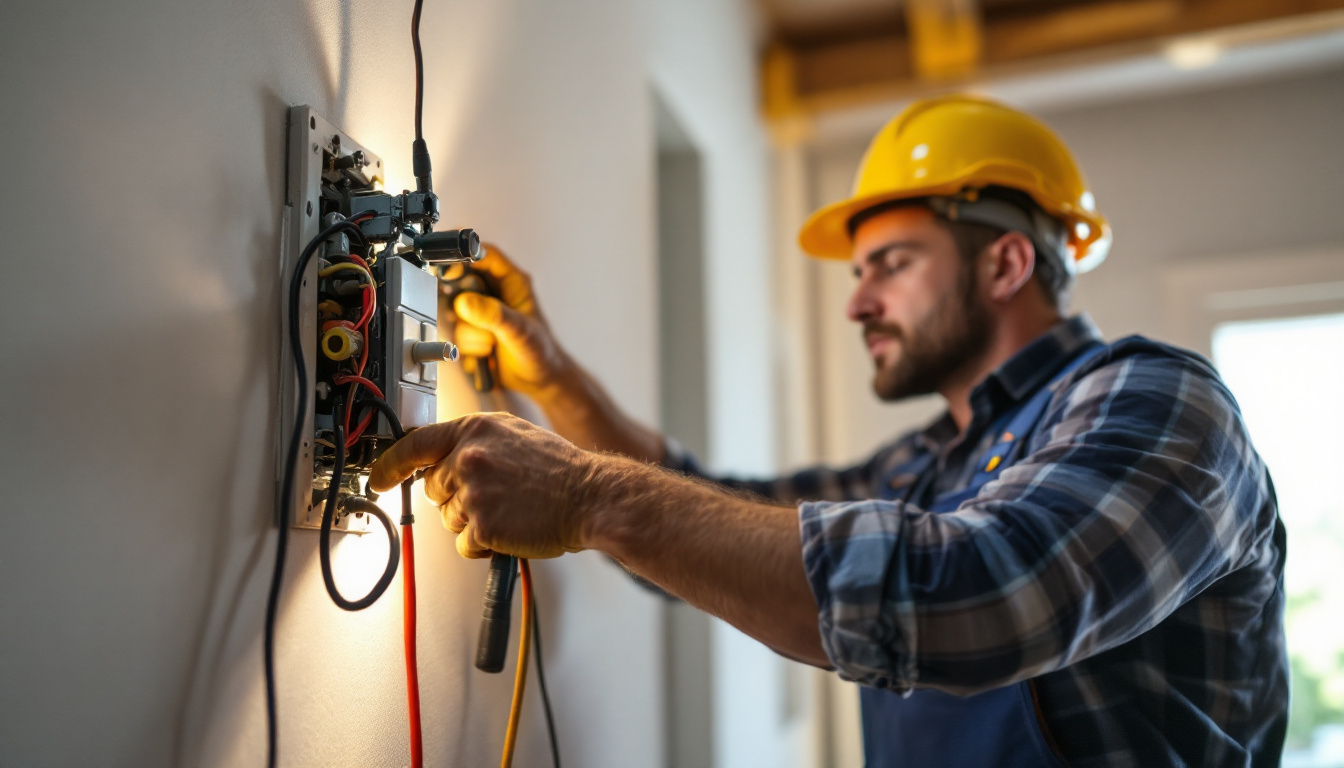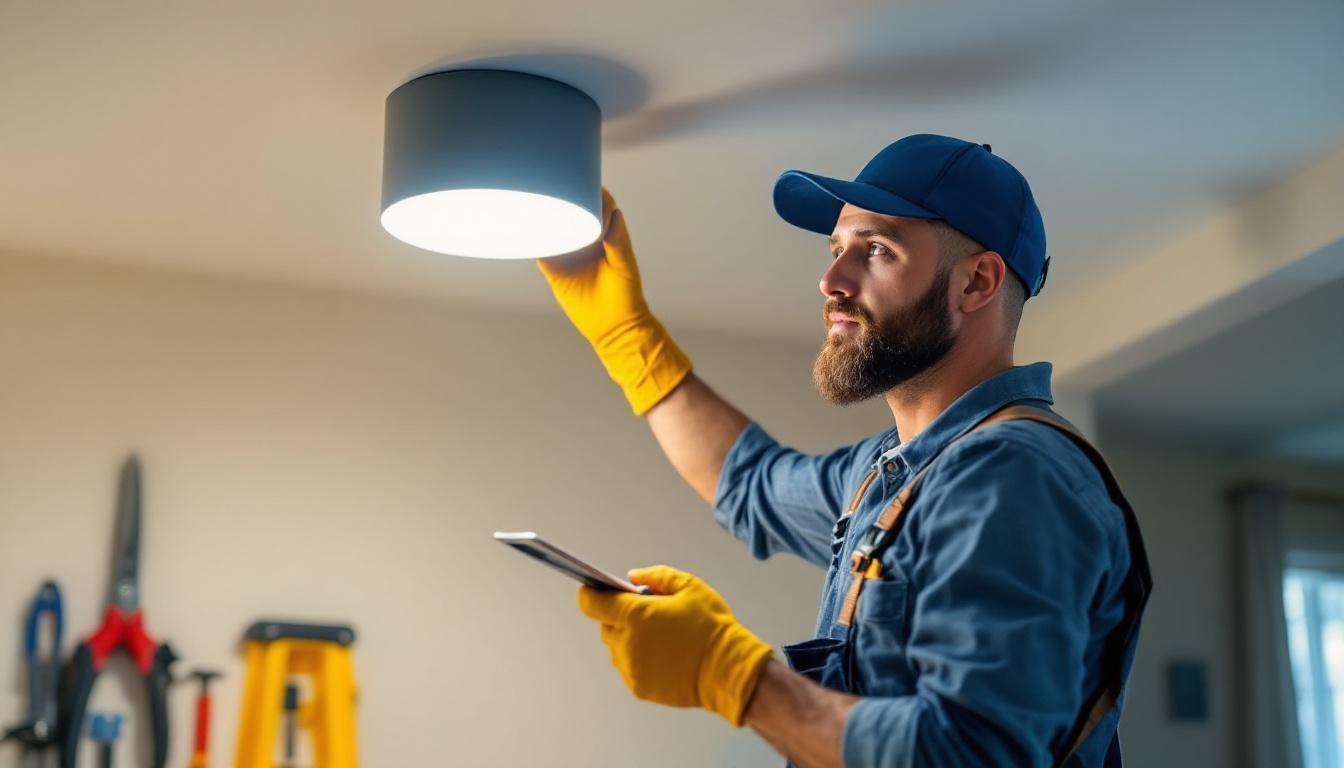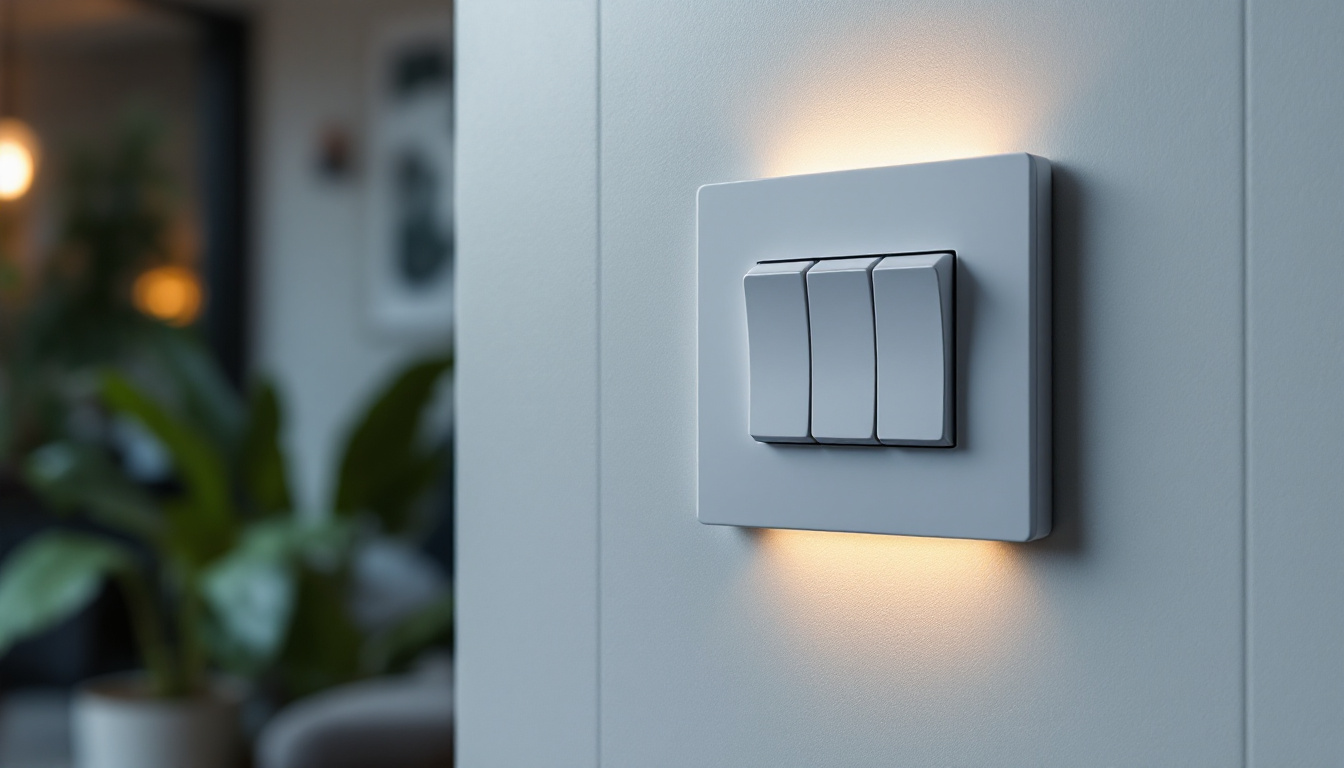
In the world of electrical installations, understanding the intricacies of three-way switches is essential for lighting contractors. This knowledge not only enhances the quality of installations but also ensures safety and compliance with electrical codes. This article delves into the expert advice surrounding three-way switches, providing valuable insights for lighting contractors looking to refine their skills and improve their service offerings.
A three-way switch allows you to control a single light fixture from two different locations, making it an invaluable component in larger spaces such as hallways, staircases, and large rooms. The functionality of these switches is based on the concept of switching the electrical path, enabling the light to be turned on or off from either location. This feature is particularly beneficial in homes with multiple entry points to a room, where it can be inconvenient to walk across a space just to turn on or off the lights.
Three-way switches differ from standard single-pole switches in their wiring configuration. Instead of having two terminals, a three-way switch has three terminals: one common terminal and two traveler terminals. This configuration allows for the switching mechanism that is crucial for controlling lighting from multiple points. The versatility of three-way switches not only enhances convenience but also contributes to energy efficiency by allowing users to turn off lights from the nearest switch, reducing unnecessary energy consumption.
To effectively work with three-way switches, it is important to understand their components. The common terminal is where the power source connects, while the traveler terminals connect to the second three-way switch. The design of these switches allows for a seamless flow of electricity, enabling the light fixture to be controlled from different locations. Additionally, the physical design of three-way switches often includes a toggle or rocker mechanism that provides tactile feedback, making it easy for users to know whether the light is on or off at a glance.
Additionally, it is essential to recognize the role of the light fixture in this setup. The fixture must be compatible with the switch configuration to ensure proper functionality. Understanding these components is vital for troubleshooting and ensuring a successful installation. Furthermore, the choice of light bulbs can also affect the overall performance; for instance, LED bulbs may require specific dimmer switches if dimming capabilities are desired, while incandescent bulbs offer a more straightforward compatibility with traditional three-way switches.
Wiring a three-way switch involves a specific process that must be adhered to for safety and functionality. The first step is to turn off the power at the circuit breaker to avoid any electrical hazards. Next, the wiring must be carefully connected, ensuring that the common terminal is linked to the power source and the traveler terminals are connected to the other switch. This process can be intricate, and it is often recommended to use color-coded wires to avoid confusion during installation, as this can significantly simplify the wiring process.
It is also crucial to ensure that the ground wire is properly connected to both switches. This not only provides safety but also helps in preventing electrical shocks. Following the correct wiring procedures is essential for ensuring that the switches operate correctly and safely. Additionally, using wire nuts to secure connections and electrical tape to insulate exposed wires can further enhance safety and reliability. For those who may be less experienced with electrical work, consulting with a licensed electrician can provide peace of mind and ensure that the installation meets local electrical codes and standards.
Even experienced lighting contractors can make mistakes when working with three-way switches. Awareness of common pitfalls can help prevent costly errors and ensure a smooth installation process. Below are some of the most frequent mistakes encountered in the field.
One of the most common mistakes is incorrect wiring. When the traveler wires are misconnected, the switches will not function properly. This can lead to situations where the light is either always on or cannot be turned on at all. It is crucial to double-check the wiring configuration before finalizing the installation.
Additionally, failing to connect the ground wire can lead to safety hazards. Ensuring that all connections are secure and correctly configured is paramount for a successful installation. It’s also important to be aware of the wire colors and their corresponding functions; for instance, black wires typically serve as hot wires, while white wires are neutral. Misidentifying these can lead to further complications, making it essential to consult wiring diagrams and local electrical codes for guidance.
After completing the installation, some contractors may overlook the importance of testing the setup. It is essential to test the functionality of the switches before closing up the wall or installing the cover plates. This step ensures that everything is working as intended and allows for any necessary adjustments to be made.
Testing the switches not only confirms their operation but also provides peace of mind to both the contractor and the client. It is a simple yet crucial step that should never be skipped. Moreover, using a multimeter to check for voltage levels can help identify any potential issues that may not be immediately apparent. This proactive approach can save time and resources in the long run, as it allows for any wiring errors to be corrected before the project is deemed complete. Additionally, educating clients about the operation of three-way switches can further enhance their satisfaction and understanding of the installation process.
Implementing best practices during installation can significantly enhance the quality of work performed by lighting contractors. These practices not only improve efficiency but also contribute to the overall safety and satisfaction of clients.
Before beginning any installation, proper planning is essential. This includes determining the optimal locations for the switches based on the layout of the space. Consider factors such as accessibility and convenience for users when deciding where to place the switches.
Additionally, understanding the flow of electricity and the distance between switches can help in selecting the appropriate wire gauge. A well-thought-out plan can streamline the installation process and reduce the likelihood of errors.
Investing in high-quality materials is another best practice that can enhance the durability and functionality of the installation. Using reputable brands for switches and wiring ensures that the components can withstand the test of time and provide reliable performance.
Moreover, quality materials can contribute to the overall safety of the installation. Cheaper alternatives may save costs upfront but can lead to issues down the line, ultimately affecting customer satisfaction and contractor reputation.
As technology continues to evolve, so do the techniques available for lighting control. Lighting contractors should stay informed about advanced methods that can enhance their service offerings and meet the growing demands of clients.
Smart lighting systems are becoming increasingly popular, allowing users to control their lighting through smartphones and voice-activated devices. Integrating smart technology into three-way switch setups can provide added convenience and energy efficiency for clients.
Contractors should familiarize themselves with various smart lighting products and their compatibility with traditional three-way switches. This knowledge enables contractors to offer innovative solutions that align with modern consumer preferences.
In addition to smart technology, incorporating dimmers and timers into three-way switch setups can enhance the functionality of lighting systems. Dimmers allow users to adjust the brightness of lights, creating ambiance and saving energy. Timers can automate lighting schedules, providing convenience and security for homeowners.
Understanding how to integrate these devices with three-way switches can set a contractor apart from competitors. Offering clients a range of options for controlling their lighting can lead to increased satisfaction and repeat business.
Safety is paramount in any electrical installation. Lighting contractors must adhere to safety standards and regulations to protect themselves and their clients. Understanding the potential hazards associated with three-way switches is crucial for ensuring a safe working environment.
Every region has specific electrical codes that must be followed during installations. Familiarity with these codes is essential for contractors to ensure compliance and avoid legal issues. This includes understanding the requirements for wire gauge, grounding, and circuit protection.
Contractors should stay updated on any changes to electrical codes and regulations to maintain compliance in their work. Regular training and education can help ensure that contractors are aware of the latest standards.
Using personal protective equipment is essential for ensuring safety during installations. Contractors should always wear appropriate PPE, including gloves, safety glasses, and insulated tools. This equipment protects against electrical shocks and other potential hazards.
Additionally, ensuring that the work area is free from clutter and hazards can help prevent accidents. A safe working environment not only protects the contractor but also instills confidence in clients regarding the quality of the work being performed.
Mastering the art of three-way switch installations is a valuable skill for lighting contractors. By understanding the components, avoiding common mistakes, and implementing best practices, contractors can enhance their service offerings and ensure client satisfaction. Staying informed about advanced techniques and adhering to safety standards further solidifies a contractor’s reputation in the industry.
Ultimately, the goal is to provide clients with reliable, efficient, and aesthetically pleasing lighting solutions. By following the expert advice outlined in this article, lighting contractors can elevate their craft and contribute to the ever-evolving field of electrical installations.
Ready to take your lighting installations to the next level? LumenWholesale is here to support you with premium, spec-grade lighting products at unbeatable wholesale prices. Say goodbye to middleman markups and hello to a vast selection of high-quality lighting essentials that meet the highest industry standards. With LumenWholesale, you can count on reliable, high-performance lighting for every project. Plus, with free shipping on bulk orders, you’re guaranteed the best value without any hidden fees. Elevate your craft with the perfect blend of quality, affordability, and convenience. Visit LumenWholesale now for Wholesale Lighting at the Best Value and make your next three-way switch installation a shining success.

Discover how converting recessed lights to flush mounts can enhance efficiency for lighting contractors.

Discover how a 3 pole switch can revolutionize your lighting setup, offering enhanced control and efficiency.

Discover innovative hacks for smart lighting contractors focusing on 5/6 inch installations.

Discover the pitfalls lighting contractors often face with industrial style lighting.